-
Posts
2,284 -
Joined
-
Last visited
-
Days Won
6
Content Type
Profiles
Forums
Blogs
Gallery
Events
Store
Posts posted by PKeating
-
-
According to a General Headquarters order dated 4.6.1915, quoted in Gordon Williamson's first book on the Iron Cross back in 1984, "Owners of the Iron Cross Second Class of 1870-1871 who have earned during the present war, in combat or at home, the same decoration for special services, will get a special silver clasp or bar which will be attached to the ribbon of the Iron Cross above the Silver Jubilee Oakleaves. The bar bears a miniature of the Iron Cross and the date 1914..." This was an addendum to Wilhelm II's order of 5.8.1914 reinstituting the Iron Cross.
Anyway, here is my Wagner WHS. Examination under the loup reveals fine enamel work of the standard one would expect from this firm and all the correct marks on the reverse. I bought the ensemble off a non-militaria-related stall in a flea market in New York a few years ago for $250.00. There were a few things there. I shan't be chucking this WHS in the fakes box on the strength of this article. But I think we ought to be ready for a rash of WHS resembling the one touted as genuine! LOL!
PK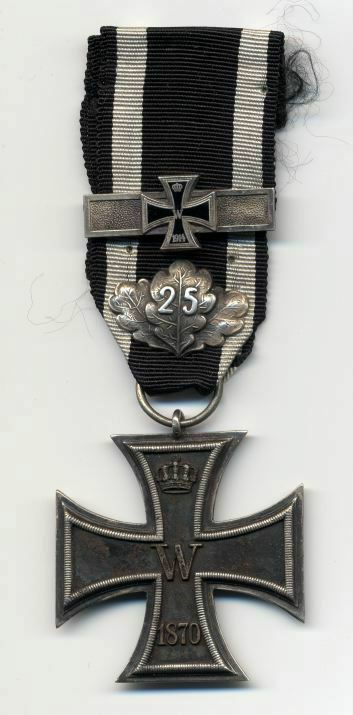
 0
0 -
It used to said that the owners of the Swastika Laundry intended to sue the NSDAP and the Hitler government for copyright-related reasons but were headed off by the de Valera government. Probably an urban myth but I have always wanted it to be true!
PK
0 -
Some French awards for Morocco bear the "David Star". As a sidenote to the remarks about the swastika, I remember little electric vans in the Dublin of my childhood in the 1960s. Here is a wonderful period photo from the Ask About Ireland website. I believe the image belongs to one Michael Corcoran. I tell people about this and they think I'm pulling their legs!
PK
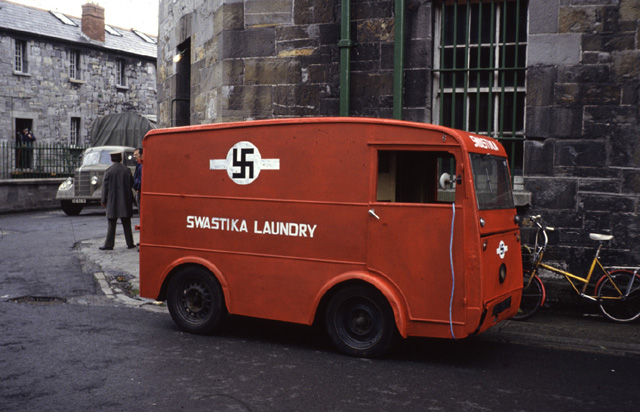
 0
0 -
Thanks for the comments and for the file entry photocopy!
PK
0 -
That is the best WM20 restoration I have seen for ages. You got the parts from Russell Motors, didn't you? I did a WD G3 one time and found that the best way of getting that preservative grease off was to place the parts on a block of wood in the hot flow from an electric space heater. A good alternative to the cadmium plating of yesterday - it is hard to get it done anywhere outside India or Pakistan nowadays because of the cyanide involved! - is to have the parts dull or hard-chromed and then fine-blasted. It is not quite the same but is better than any of the alternative finishes offered by platers the "civilised world" these days.
PK
0 -
The award document unfolded. This was tucked into the lid of the M?daille Militaire box and is quite a rarely encountered document. As you can see, Blanchard was honoured about eight years after his death.
PK
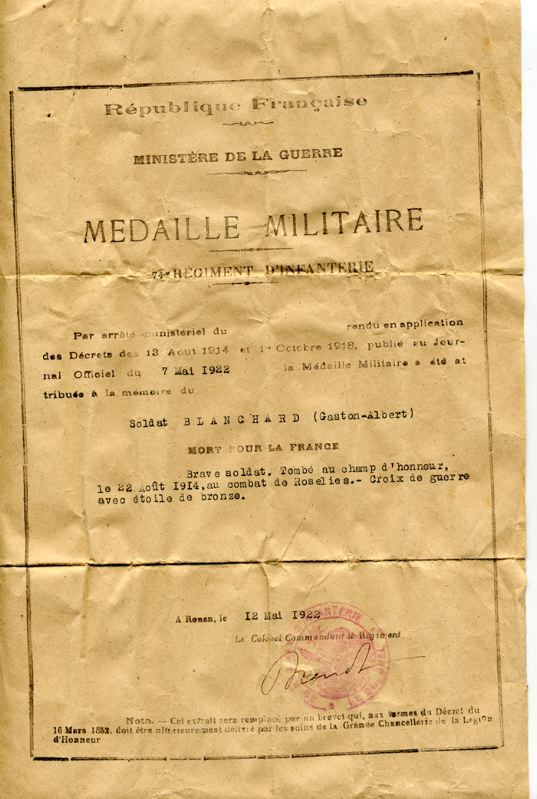
 0
0 -
-
Here is an original and quite rare wartime photograph of a naval officer wearing the 1st pattern EK2 bar.
PK
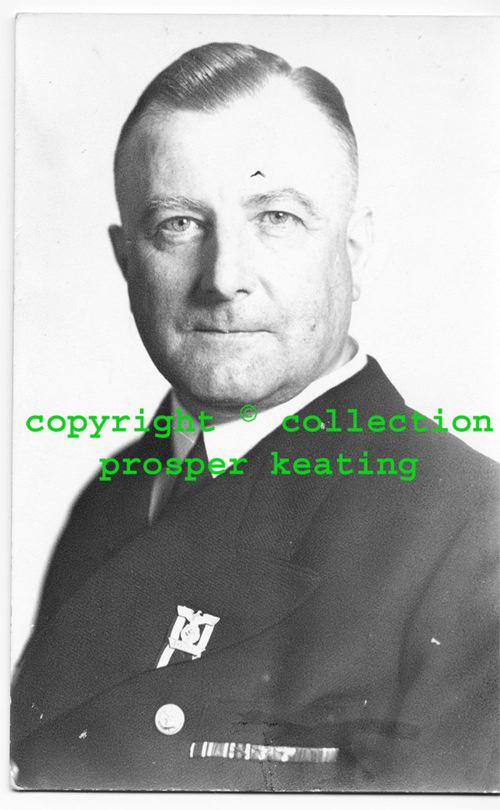
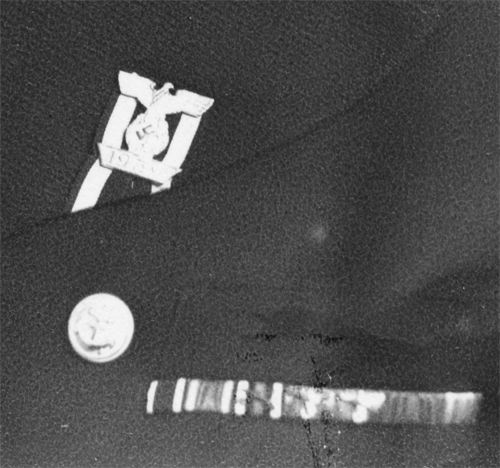

 0
0 -
What an interesting book! I believe that there were some awards of the Iron Cross in East Africa too. The 1951 film The African Queen touched on this often forgotten aspect of WW1. There was apparently an East African who served with Commonwealth forces in WW2 and wore his WW2 British medals, so the story has it, afterwards with his 1914 EK2 mounted on the end.
PK
0 -
Too funny! Of course Niemann will refund the buyer's money, as long as the buyer plays by Niemann's rules and doesn't make a fuss. Niemann always refunds people when caught out having sold them a clunker. It's a cornerstone of his modus operandi. After all, he is a scrupulously honest fellow. This one must have slipped through unnoticed. After all, he handles literally billions of badges a day so there are always going to be occasional mistakes.
PK
0 -
I agree entirely with you, Dietrich! My post was not a dig at you, by the way. I was actually thinking of something I read about "L/64 A" Assmann FSA (LW)! I respect your abilities not just as a researcher and historian of the RK but also as a writer, even if we disagree on some points.
On one level - and you have clearly understood my meaning and empathise with it - I remain absolutely open-minded about 'rounders' and other variants. After all, apart from anything else, Dr Doehle was not prompted to get heavy with manufacturers purely because of non-regulation Ritterkreuze with zinc and brass cores and white metal frames. He also intended to signal to other, non-approved firms that manufacture of the RK without a licence was not allowed. This is probably what informed his decision, as head of the LDO, to forbid retail sales, thereby removing any incentive to produce the RK for non-approved firms.
So, between September 1939 and March 1941, there must have been all sorts of variants around, some of which would have been acquired by recipients for everyday wear or whatever. We know that there were variants. The photo posted by Bryan and the existence of the "half-ringers" etcetera prove this beyond reasonable doubt. My caution arises from my belief that 90% or more of dealers are crooks and that, in the absence of proof that would satisfy, say, a court of law or inquiry, any Ritterkreuz des EK touted by a dealer or someone close to the dealer fraternity - anyone close to, say, that whole MAX Mafia or the Hamburg Harlots - as a 'rounder' or a variant made in 1940 or early 1941 by Helmut Splink und Sohn must be considered with much circumspection.
Clear though the images Bryan posted are, in terms of showing something that could well be a 'rounder', they are not sufficiently clear, as I am sure you will all agree, to provide a basis for detailed comparison with any cross offered as a 'rounder' by dealers or, recently, a certain well known collector of Ritterkreuze who purchased a genuine and very rare Juncker neusilber and zink RK from me last year.
PK
0 -
The RK zum EK has been convincingly faked since the 1950s even if many people prefer to delude themselves that the best fakes or repros around in the 1960s came from Rudolf Souval. The KC is a wonderful award but only if owned in conjunction with the recipient's other decorations and, importantly, documents. Otherwise it is just an overpriced Iron Cross and not even particularly rare as an object. The dealers' showcases and websites are full of them, just as they are full of Glider Pilot Badges, solid silver Spanish Crosses and all sorts of other things that used to be rare.
The bottom has to some extent fallen out of the KC market because of all the revelations about Steinhauer & L?ck and Klein & Quenzer dies and all the opposing viewpoints and articles about this decoration. It seems that hardly a year goes by before we have some other variant proposed and accepted into the fold by a certain clique of self-appointed experts. The only KCs I am inclined to trust are those by C E Juncker and Zimmermann, who also made the KCs supplied by Godet. We can be quite sure of this for the simple reason that had Godet been the maker of the Zimmermann/Godet crosses, Frau Klietmann would have put those dies back to work in the 1960s and 1970s and Zimmermann/Godet crosses would not be as rare as they are.
I'd also trust the 'half-loop' crosses and maybe the Otto Schickle ones but unless I can identify a cross as being the same one around the neck of its original owner - through visible damage, for example, to the core finish - then I wouldn't touch anything by S&L and K&Q or any other firm now hailed as a wartime producer of the award. I also wouldn't touch a 'rounder'. Too much controversy surrounds these things to risk tying up thousands of euros in something that is 'in' today and 'out' tomorrow. I have a couple of nice originals and that'll do for me.
All these attempts to validate crosses that are familiar only to people who have been around for the past five years or less have a ring of desperation about them. There is only a limited amount of Third Reich memorabilia in circulation but demand is rising or, rather, supply is falling and so the demand has to be supplied. Consequently, we are now expected to believe that all sorts of previously unobserved variants and medals and badges long-dismissed as fakes are all genuine pre-May 1945 pieces. Sure...pull the other leg, it's got bells on.
PK
0 -
Yes, I would imagine there were firms trying to curry favour who must have made Knights' Crosses in the hope of impressing the PKF and LDO but in the end, only a handful of firms, as we know, received licences to supply Germany's highest decoration.
P
0 -
Not sure that it would be an EK2 of any type. Brian, don't get me wrong: I actually respect most of your propositions. Pax vobiscum. This is an interesting one. I am sure there were firms who made KCs before Dr Doehle got heavy with them in March '41. You're right. This cross doesn't stand up to comparison with any of the crosses we accept as crosses made by the firms "on the list".
C E Juncker
Steinhauer & L?ck
Klein & Quenzer
Deschler
Zimmermann*
Godet*
Otto Schickle
*The same...probably Zimmermann dies.
I reckon it's possible that Paul Meybauer made KCs. I have a set of Swords by Meybauer, marked L/13. I think it's more than likely that that might have produced some crosses.
What say you, Brian?
PK
0 -
Indeed, Knights' Crosses could be purchased by recipients but they were crosses produced by the firms given the contract to do so by the authorities before the LDO forbade retails sales. The rounded inner corners of the beading on this cross appear to be the result of filing to clear the swastika as they have an asymetric look.
PK
0 -
Hi Prosper!
Thanks for the clarification. What is the difference in the two processes? (the gilding and anodization process)
I suppose that if I want to be really pedantic, the correct definition of "gilding" is the application of a thin layer of gold leaf or some similar gold-like substance to an object whereas "gilt" is gold-plating, usually by electrolysis. Some German awards were fire-gilt, a process involving the use of cyanide and consequently very hazardous but imparting a luxurious gilt finish, hence the name. Anodising is, on the other hand, an electro-chemical process that creates a durable layer of oxidisation on the surface of the metal. During the process, colouring agents (dyes) can be added to the mix as the oxide layer forms. The result, as with the wreaths of these badges, is a layer of aluminium oxide of the chosen colour. This is why the gold finish has that matt appearance. It is non-metallic. Common applications today include those coloured aluminium nuts and bolts popular with custom car and motorbike builders. Aluminium can corrode quite quickly if left naked and to its own devices, particularly in polluted towns or anywhere near the sea and anodisation is considered preference to gilt or gilding because it seals the base metal whereas corrosion or patination of a base metal prone to such changes can spread under gilt or gilding and eventually disfigure the appearance or, in extreme cases, lift off the finish
Hope this helps.
PK
0 -
The wreaths of the aluminium badges aren't gilded, as such. They are anodised.
PK
0 -
In the case of a material like zinc or pot metal, shrinkage would be quite substantial and more pronounced than the shrinkage that occurs with denser metals like bronze or bronze-based alloys. It is believed that badges were cast from an issue piece in 1945. If this is the case, then such badges would be at least 1mm smaller and possibly as much as 1.5mm smaller than the pattern used to make the mould. However, I am referring to crude casting as opposed to vacuum casting or centrifugal casting. I am thinking more of some local foundry pouring molten pot metal into a mould or set of moulds with drainage holes. This comparitively primitive method would result in the lack of detail to which you refer whereas vacuum casting would normally produce quite a well-detailed result, as would centrifugal casting.
I know this because I sometimes cast small parts for rare vintage motorcycle carburettors and I usually give the model several coats of heavy primer/filler paint, up to 1.5mm thick, to compensate for shrinkage, especially if casting in softish white metal to replicate mass-produced carbs from the 1930s to the 1950s. With bronze, 1mm or less will do. Where the badge is concerned, once it had been tidied up with files and so on, it is not at all surprising that it would be smaller than the otherwise identical but larger badge from which it had been cast. I suppose that this raises the question of when it was cast from the original.
Well, if it serves to reassure you at all, this badge has been displayed on Majorplm for at least two years and in all that time, the only person I can recall who ever suggested that it was no good was young Chris McClurkan, whose well-argued but, alas, weakly supported depositions on the subject of the Bandenkampfabzeichen in various forums will be recalled by many here. Consequently, one must take the view that the two people - McClurkan and the dealer to whom you offered it - who have decried it as a fake are in the minority against the thousands who have seen it on many occasions and had ample opportunity to condemn it.
It has also been cited as a reference in various forum discussions. I was even going to link the images today but had to link to the webpage instead because the link from the thumbnail on Majorplm to Steve's images was down. Then Philippe repaired the link and a couple of people got in touch with me to say, gently in case I was losing the plot, that it was the same badge! Admittedly, I don't much like it either, as I have intimated, but to paraphase George Bernard Shaw, who are we - McClurkan, your dealer and myself - against so many? I don't wish that to come across as flippant because I am actually making a reasonable point. You're understandably concerned because some dealer has told you it's bad. How qualified is the dealer to condemn this badge? I suspect that he knows no more about them, in reality, than the rest of us know, with certainty, about the Bandenkampfabzeichen.
If you intend to sell it, you ought to advertise it in various classfieds. That would be a real test. I would be surprised if you did not succeed in selling it. After all, Steve bought it in the first place, it has been much-viewed and also used as reference material in various open discussions and then, ultimately, you bought it from Steve for, I imagine, quite a lot of money. I remember a near-mint Juncker Glider Pilot Badge I had. Some fellows on another forum declared it to be a fake when I offered it for sale. I was quite despondent and then linked to the thread in question in my ad for the sake of absolute openness. It was bought by a fellow who is participating in this thread and who was very happy with his badge and who is no virgin when it comes to Luftwaffe flight badges. In retrospect, only two people condemned that Glider Badge as a fake out of all the people who saw and handled it and who offered money for it.
So, don't be too quick to take this dealer's word for it.
PK
0 -
Well, here's a turn-up! Now that I can see the one on Majorplm's Collections show case webpage, it is indeed the same badge. Here's the link: http://www.majorplm.com/collections/Coll-G...%20Gold-ST.html.
Steve Till has displayed a number of nice things on Majorplm's showcase pages. As you can see, these are his photos. He is an honest bloke. The badge is accepted by many as genuine. I recall that Steve advertised a couple of things through Majorplm but don't recall this badge being offered for sale as such. I'd have to ask the chap who actually runs Majorplm as I don't have much to do with the site on a regular basis. I sometimes offer items from my collection through the site, which is not a dealership but a collectors' showcase with a kind of classifieds section tacked onto it through which a loose group of friends and acquaintances sometimes sell stuff. Buyers are always referred to the vendors and deal with them directly. Sometimes people contact buyers directly when their items are credited on the For Sale and Collections pages.
Some people believe this badge to be real. Some don't. Your mate clearly ran across someone who doesn't. Which brings me back to my point that nobody actually knows what is original and what isn't. I have seen three real badges, with a direct line to the recipients, and none of them looked anything like 99/100 of the badges in circulation. But as they didn't have hallmarks/makers' marks, who knows who made them? They were certainly of the quality I'd expect of Juncker but that could stand for several other firms as well.
I agree that C E Juncker may have made solid-backed Bandenkampabzeichen but can anyone prove it? Could I prove that the three badges I liked - observed in the past thirty years - were genuine? No, not at all. They were probably genuine and I would buy any of the three were someone to offer one to me today. But all these other badges? Well...I wouldn't buy them. This ex-Steve Till badge may well be original. On the other hand, the Silver grade shown on our site could be original. They both purport to be the same type of badge so one of them must, obviously, be a fake.
Which one is it? Lots of people have opinions but nobody can prove any of them. Your mate ought to put it up for sale. One of the people who believes in it will buy it, just as he bought it from Steve Till. The people who believe in it would scoff at any of the three badges I remember as being most likely to be original.
Which is why, like the Godet Oakleaves and other things, I do not have a Bandenkampabzeichen in my collection.
PK
0 -
First feeling is that whatever else it may or may not be, this never left a German firm during the war with a gold wash applied. The gold on the obverse looks like the gilt-in-a-bottle stuff used to touch up the antique picture frames and furniture and then given a good rubbing. Were there this much finish remaining on the obverse, there would normally be as much if not more remaining on the reverse.
[i was linking to images from my website but the link was refused because dynamic pages are disallowed so I don't have time right now to dlownload, resize and uoload them here, I will place a link to the webpage where you can see the badge in question - PK]
http://www.majorplm.com/collections/Coll-G...BH-oct2004.html
Here are some pictures of an example - Silver grade - that is widely accepted as original. It differs from the one shown above, which has a deathhead whose teeth are reminiscent of the queen bug in the Alien film. Your friend's badge is clearly trying to be like this badge, with the asymetric swastika etcerera...or perhaps it is the other way around. You see, the unpalatable truth is that nobody actually knows what is original or not when it comes to these convincing-looking examples.
This badge is supposed to have been made by C E Juncker and the hinge and hook assemblies are like those fitted by that firm to their zinc badges although I too remain unsure when it comes to that coke bottle pin. I would prefer to see a magnetic round section pin on that hinge. But the pins could have been bought in from an alternative source. Some people say that the maker wasn't Juncker. Others say that badges made after December 1944, when Juncker's factory was destroyed by bombing, were cast from issue pieces.
One thing I do know is that I was shown a badge by a recipient's grandson, on the reverse of which the recipient's details were neatly scratched and which was, IMO, unquestionably of mid-wartime origin. It was struck in feinzink, as opposed to potmetal, with a good quality bronze lacquer reminiscent of that seen on, say, some KVK2, and had the classic midwar hinge, pin and hook assembly used by Juncker. The overall strike quality and finish not only overshadowed that of 99% of the Bandenkampfabzeichen we see on the internet but conformed in my opinion, as a keen fan of Juncker decorations and badges, to the quality one expects to see of items from C E Juncker up to the effective end of their production when the factory was bombed out in 1944.
Of course, we know that some were made after the destruction of the Juncker firm and these were supposed to have been castings from a mould made from an issue badge, or so the story goes. It sounds a bit like a justification for fakes cast from an original to me. Anyway, there have been so many discussions of these badges and the only conclusion to be drawn is that when it comes to badges like the ones pictured here, we can say that some people believe in them and some don't.
Were I offered the badge about which Gordon is asking, I would not buy it. Even if it is a genuine variant, someone has played about it by trying to make it into a Gold grade.
PK
0 -
Hallo Jos! Well, Stijn, Jos and Chris: to borrow from the late, great, Bill Stump...looks like I'm going to be eating crow pie! Seriously, these two photos do appear to show tan-backed cloth badges worn on the tropical tunics. OK...someone must have produced some.
PK
0 -
Could we see the whole picture? I agree that under normal circumstances, the colour difference would be much more contrasted - as in the attached photo of two Fallschirm-Propaganda-Kompanie men in Marseilles in 1943 - but given the quality of the print, the lighting, the possibility that the tunic and the wool backing could be sun and/or laundry-bleached, I would treat this image with a certain amount of caution. The edges of the badge in your photo appear close-cropped but the inner fields are certainly of a darker shade than the surrounding tan cotton drill fabric. Darker cotton? Maybe. But it could be a trick of the light or just the result of fading of the print.
Many people were caught out with the high quality Parachutist Badges on tan backing. I am not suggesting that it is not possible and nor am I stating with certainty that Chris's tan-backed badge is postwar but I tend to be cautious, perhaps excessively so. The next time I visit the ECPA-D in Paris, I will scour their Mediterranean-related albums to see if there are any photos showing tan-backed badges.
PK
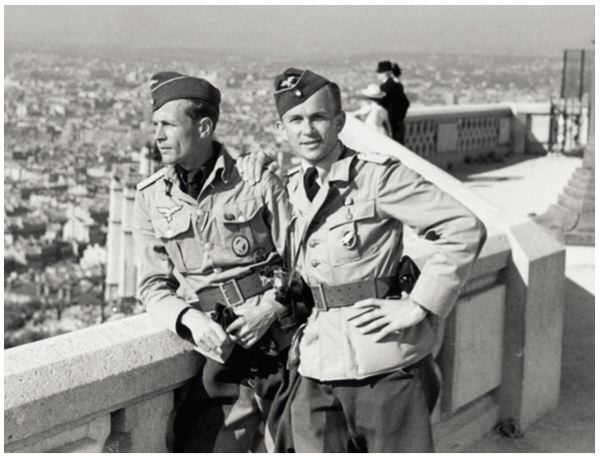
 0
0 -
By the way, Stijn, I found more photos of Otto Bracht and his comrades in the ECPA-D in France. He was with 2. Fallschirmj?ger-Division around Zhitomir in the Ukraine from November 1943 to April 1944, when the division went to France. Anyway, I thought other readers might like to see one of the men who earned the Glider Pilot Badge and to remember that once on the ground, they often assumed combat status.
PK
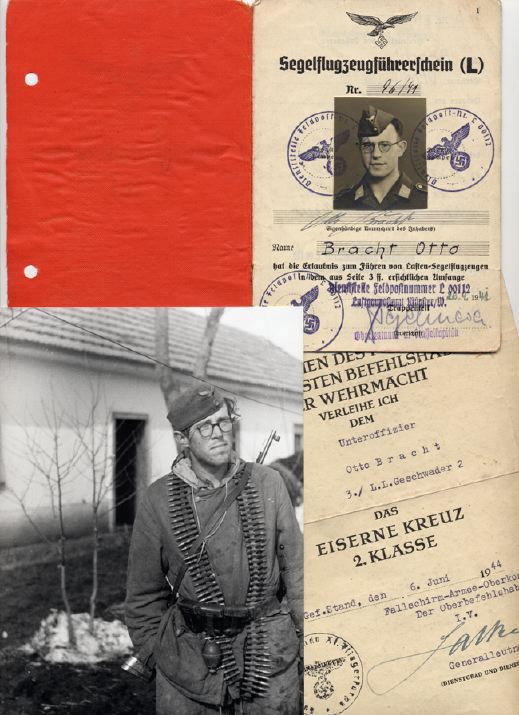
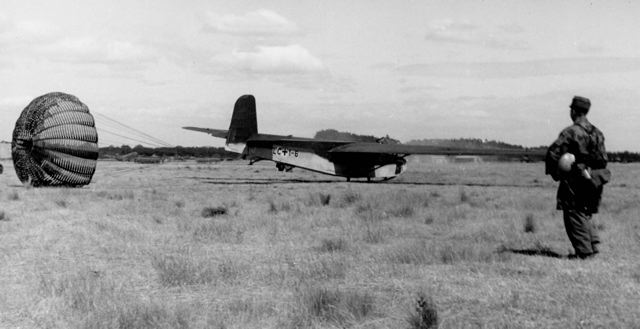

 0
0 -
Not sure about tan-backed Luftwaffe flight badges, Chris. I've never seen a photo of a cloth Glider Pilot Badge on a tropical tunic but I have photos of Fallschirmj?ger wearing their cloth jump badges on LW-issue tropical tunics and in every case they are 'normal' blue-grey-backed versions. Your blue-grey one appears to be absolutely OK. So does your metal one. Here, for interests' sake, are a few things Stijn will recognise.
PK
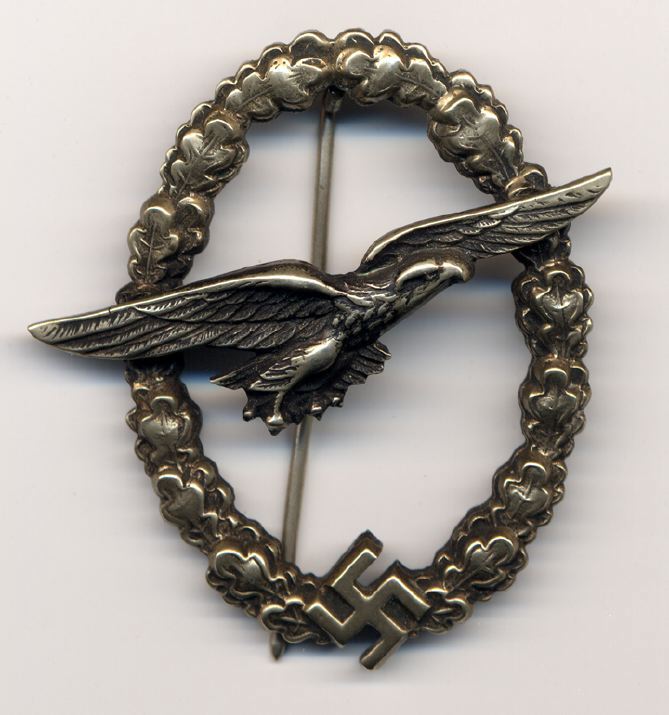


 0
0




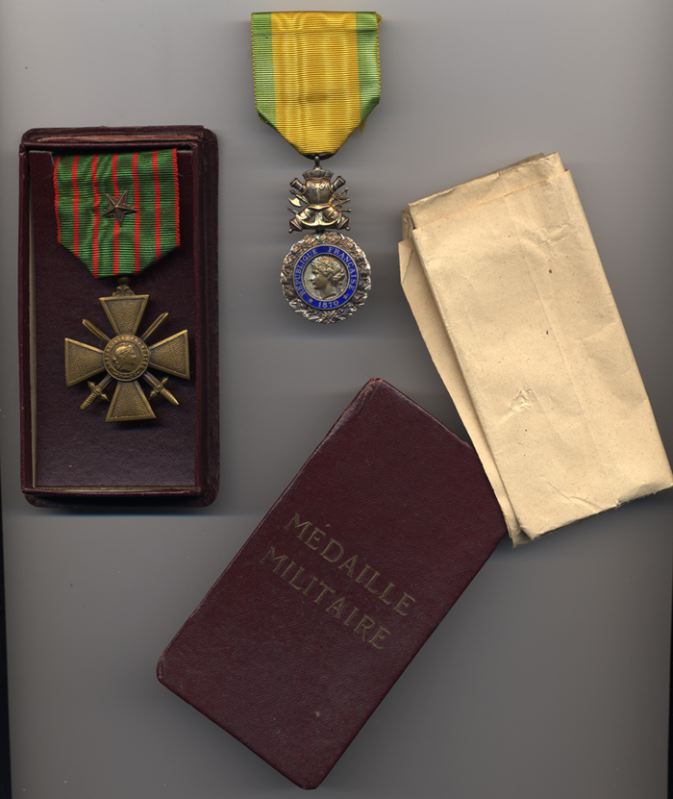
1914 Clasp to 1870 EK
in Germany: All Eras: The Iron Cross
Posted
They are certainly identical twins, the patina of the crosses aside! The holes in my ribbon match the prongs on the WHS so I think someone must have removed it and then replaced in a different position at some point. The crosses are obviously by the same maker, like the Oakleaves and the WHS. The crosses could date from around the 1895 anniversary but I think they are probably from the 1914-1918 period. Crosses from the 1870s and 1880s tend to look like this nice example below.
PK